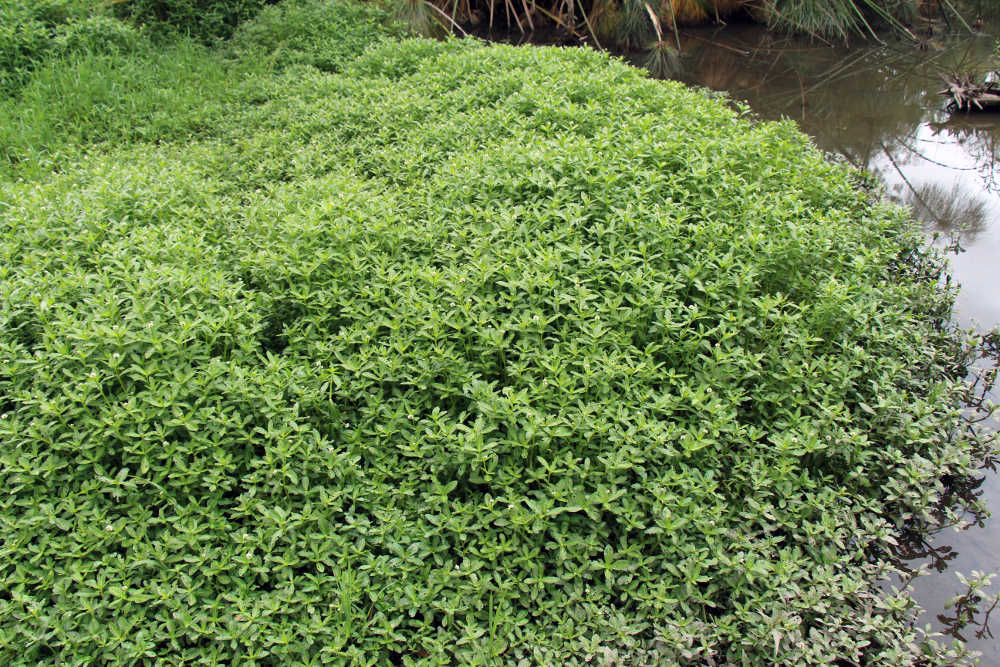With much of NSW still in drought conditions, it has become more and more important to make sure we protect the water we do have. Whether this be our rivers, dams or lakes, the eradication of weeds from these water sources will help improve water ways and the land surrounding.
Aquatic weeds are causing environmental harm by choking out native vegetation or aquatic animals and decreasing agricultural production. Landowners are legally responsible for the management of weeds on their property, both on land and in waterways.
METHODS
Landowners are often unsure of which herbicides to use in aquatic areas. Understandably because of the high level of risk of contamination of waterways, the use of herbicides should be minimised. If using herbicides, all landowners should seek advice for their local council or land service office regarding treatment of aquatic weeds.
Control methods other than herbicides, while possibly more physically demanding, are safer for aquatic life, overall quality of water and surrounding areas. Other control measures would be mechanical removal, mulch or weed mat, shading, fire, flame guns, biological control agents, manual control, slashing, ring barking and controlled grazing.
WEED MANAGEMENT PLAN
The important thing before starting spraying the weeds would be to have a weed management plan to best tackle the job. This would mean
- target weed: identification, biology, growth stages (such as spraying weeds when they are young and actively growing as they are more susceptible to herbicides)
- control measure: manual removal or herbicides (check recommended application times and amounts)
- location: check weather, soil characteristics, water level, native plants and animals, livestock, nearby crops, ornamental plants, water-off-takes; check for potential public water contamination
IDENTIFICATION
The most important step of weed management, is identifying the weed. If you don't identify the weed correctly, this could mean the wrong methods of control are taken and therefore will have little to no impact on controlling or eradicating the weed.
Below is a list of few of the most common aquatic weed species across Australia with some common treatment methods, the problems they cause and locations.
Alligator Weed
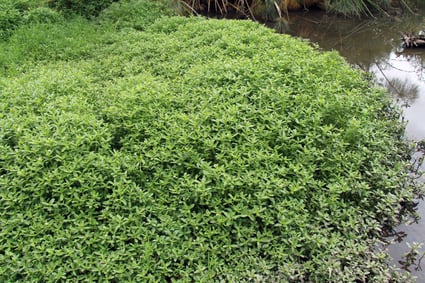 Alligator Weed is considered one of Australia's worst weed's due to it's invasiveness, capacity to spread and regenerate. Able to grow on land and in water, the Alligator Weed can have serious impact on waterways, wetlands and irrigation systems.
Alligator Weed is considered one of Australia's worst weed's due to it's invasiveness, capacity to spread and regenerate. Able to grow on land and in water, the Alligator Weed can have serious impact on waterways, wetlands and irrigation systems.
Herbicides are the best control methods due to this weeds ability to spread with ease when uprooted (earth moving equipment and boating equipment are responsible for the greatest spread).
Ferny Azolla / Green Azolla / Red Azolla
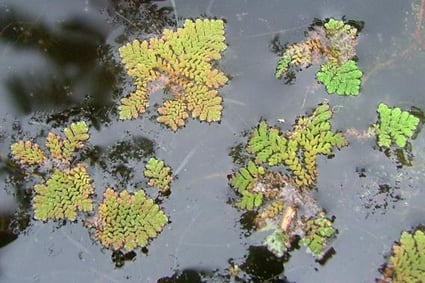
A native plant that generally grows in freshwater swaps, wetlands drainage channels, lakes, ponds and slow-moving waterways.
Generally beneficial, however in extreme cases of Azolla, complete coverings can cause de-oxygenation of the water. Other issues that can arise are blocked pumps, water flow and restrict access to drinking water.
Best methods for control are mechincal or manual removal such as scraping it off the top of the water source with a scroop net.
Salvinia - High Priority Weed: report to local council
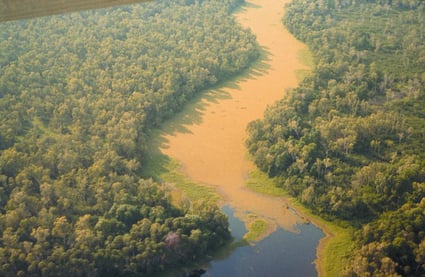 Salvinia is a fre-floating aquatic fern with slender stems, floating leaves and rootlike structure. Most commonly found in still and slow-moving fresh-water with infestations recorded in QLD, NSW, VIC, NT, WA and SA.
Salvinia is a fre-floating aquatic fern with slender stems, floating leaves and rootlike structure. Most commonly found in still and slow-moving fresh-water with infestations recorded in QLD, NSW, VIC, NT, WA and SA.
Round-to-oval shape with dense, waxy hairs, these ferns float on the top of the water creating a thick covering with roots forming into trailing, hairy strands up to 25cm long.
Mechanical removal is best for small infestations (take care to remove all-plants to prevent rapid re-growth.
Photo courtesy: https://weeds.dpi.nsw.gov.au/WeedImages/Details/851?NoWeeds=8 , P: Colin G. Wilson
Water Lettuce / Nile Cabbage / Water Lily
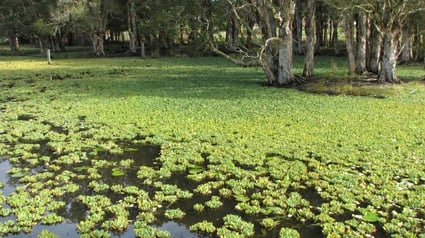 Water Lettuce is a free floating aquatic weed which can quickly spread to cover an entire body of water. Rivers, wetlands, lakes, reservoirs and slow moving streams are most at risk.
Water Lettuce is a free floating aquatic weed which can quickly spread to cover an entire body of water. Rivers, wetlands, lakes, reservoirs and slow moving streams are most at risk.
Resembling a lettuce, this aquatic weed is spongy with fan-shaped leaves covered in hairs. Dense coverings of Water Lettuce can interfere with irrigation, water sports, reduce oxygen killing fish and native plants and attracting mosquitos.
Physical removal is slow but the most effective.
To see a full list of aquatic weeds, visit the relevant state departments focused on aquatic weed control:
- NSW: https://www.dpi.nsw.gov.au/__data/assets/pdf_file/0007/329308/041209-DPI-RWW-PLANT-GUIDE.pdf
- WA: https://www.agric.wa.gov.au/invasive-species/aquatic-weeds
- SA: https://pir.sa.gov.au/__data/assets/pdf_file/0019/137008/nrmbu_Aquatic_weeds_in_SA_broch_final.pdf
- NT: https://nt.gov.au/environment/weeds/weeds-in-the-nt/A-Z-list-of-weeds-in-the-NT
- VIC: http://vro.agriculture.vic.gov.au/dpi/vro/vrosite.nsf/pages/weeds_aquatic
- TAS: https://dpipwe.tas.gov.au/invasive-species/weeds/weeds-index/declared-weeds-index
HERBICIDES
While herbicides are not the always the best method of control with aquatic weeds, sometimes the physical removal is simply impossible as highlighted by the images above. It is in these cases, that herbicides would be best used as it can be sprayed over a large area quickly and efficiently.
As UTV's are becoming more and more popular with chemical spraying, it is very important that you get the right UTV sprayer for your UTV. Units such as the SprayScout offers a compact but powerful spray solution allowing you to access those hard to reach water sources such as streams, dams and rivers. With large but shallow areas to spray, sometimes using an amphibious vehicle with a mounted Spot Ranger like the below is the best way to attack!
It is very important to follow all chemical label instructions as well as contacting you local council or weeds officer to determine the best method of application.
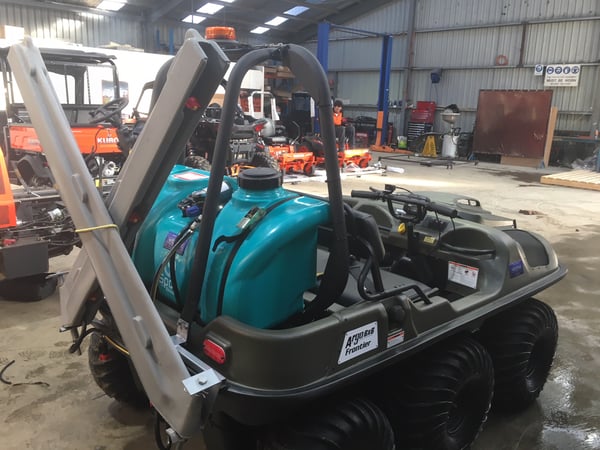
As we know, aquatic weeds can affect the environment by impeding water flow and increasing flooding and erosion, reducing water quality and creating health hazards, displacing natural vegetation and destroying natural aquatic life, preventing recreational activities, reducing fish habitats, blocking channels and irrigation equipment, and in the drought conditions we are, preventing stock access to water.
By knowing the water source you are responsible for, being able to identify the aquatic weed taking over and the best methods for eradication, we can all work together to make our water ways cleaner and healthier for the environment.


